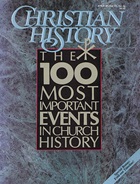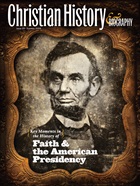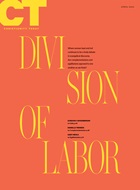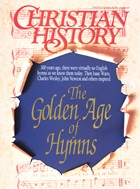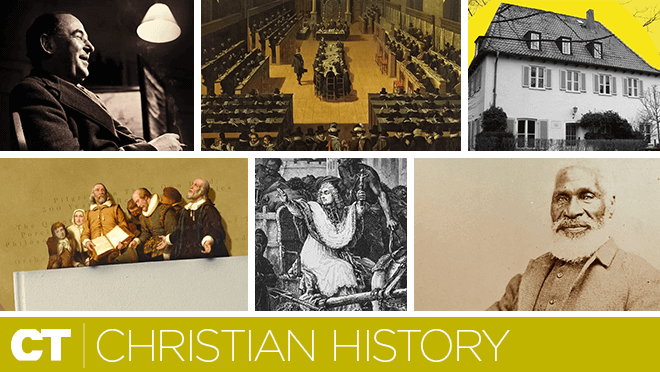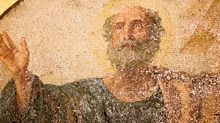The Golden Age of Hymns
1702 Isaac Watts, “the liberator of the English hymn,” becomes Minister of Mark Lane Church in London
1703 John Wesley, Methodist leader and hymn translator/compiler, is born
1704 Johann A. Freylinghausen (son-in-law of August Francke) publishes hymnal for pietists
1705 Horae Lyricae, first published collection of Watts’s verse
1707 Isaac Watts’s landmark Hymns and Spiritual Songs; Charles Wesley, writer of thousands of hymns, born; as is Selina Hastings, Countess of Huntingdon, who founds a branch of Calvinistic Methodists and publishes more than 10 hymn collections
1709 Thomas Ken’s “Doxology” takes current form
c. 1710 New “piano e forte” instrument gains interest
1712 Cotton Mather publishes hymns by Watts in the colonies; Freylinghausen’s second hymnal
1715 Watts’s children’s hymnal, Divine Songs for Children
1717 William Williams, the “Isaac Watts of Wales,” is born; he writes more than 800 Welsh and 100 English hymns, among them “Guide Me, O Thou Great Jehovah”
1719 Isaac Watts’s The Psalms of David Imitated in the Language of the New Testament
1721 First tunebooks for American singing schools
1722 Conflicts over “Regular ” singing (not lined-out) in some colonial churches; Count Zinzendorf founds refuge for the Moravians; his nearly 2,000 hymns and piety stir John Wesley, who translates one hymn as “Jesus, Thy Blood and Righteousness”
1729 Charles Wesley founds Holy Club at Oxford that gives rise to Methodism; Benjamin Franklin reprints Watts’s Psalms of David; Philip Doddridge, author of 400-plus hymns such as “Hark, the Glad Sound!” opens seminary
1734 John Cennick converted; an assistant to George Whitefield, he writes “Children of the Heavenly King”
1735 John and Charles Wesley sail to Georgia
1737 John Wesley prepares the Charlestown Collection of Psalms and Hymns—his first hymnal, the first published in North America, and the first of Church of England
1738 May 21, Charles Wesley’s conversion; May 24, John Wesley’s conversion; first American preaching tour of George Whitefield, who spreads Watts’s hymns
1739 Publication of the Wesleys’ Hymns and Sacred Poems
1742 Jonathan Edwards uses Watts’s hymns in his congregation; Wesleys’ Collection of Tunes As Used at the Foundry
1744 First Methodist general conference
1748 John Newton, author of “Amazing Grace!;” converted; Isaac Watts dies;
1749 Beginning of Calvinist-Arminian controversy between Whitefield and Wesley; Charles Wesley marries and publishes two-volume Hymns and Sacred Poems; papal encyclical points to dangers of instruments and theatricality
1753 George Whitefield publishes hymnal
1756 Charles Wesley’s last nationwide preaching tour
1760s Conflicts in colonial churches: Watts’s hymns vs. Psalms
1760 Martin Madan publishes hymnal; two volumes of Anne Steele’s Poems on Subjects Chiefly Devotional
1761 James Lyon’s Urania, important American tunebook
1764 John Newton takes parish in Olney
1766 Newport Collection, early American hymnal using several English authors
1769 Gerhard Tersteegen, German Reformed hymn writer, dies; John Wesley translated his hymns
1770s James Montgomery, author of “Angels from the Realms of Glory,” writing hymns
1770 George Whitefield dies; William Billings’sNew-England Psalm-Singer, first all-American tunebook
1771 Last edition of Freylinghausen’s hymnbook; Wesley sends Francis Asbury to America
1776 Augustus Montague Toplady publishes hymnal including his “Rock of Ages”
1779 Anglican minister John Newton and poet William Cowper publish Olney Hymns, featuring “Amazing Grace;” and “Glorious Things of Thee Are Spoken”
1780 John Wesley’s Collection of Hymns for the Use of the People Called Methodists
1783 Reginald Heber born, who later writes “Holy, Holy, Holy, Lord God Almighty!”
1784 John Wesley outlines Sunday worship service for American Methodists
1787 John Rippon’s Baptist hymnal
1788 Charles Wesley dies
1790s African-American “spiritual” developing
1791 John Wesley, William Williams, and Countess of Huntingdon die
1797 Timothy Dwight revises Watts’s Psalms and Hymns
1799 Richard Allen ordained Bishop of AME church; 2 years later produces 1st black hymnal for it
Church and World Events
1701 Yale founded
1702 Anne Queen of England (to 1714)
1703 Delaware founded
1704 John Locke dies
1705 Philip Jacob Spener, leader of German pietism, dies;
1706 First American presbytery
1707 Bach’s first work
1711 Alexander Pope’s Essay on
Criticism;
Henry Melchior Muehlenberg, the “patriarch
of American Lutheranism,” born
1714 Fahrenheit’s thermometer
1715 “Sun King” Louis XIV dies
1718 William Penn, founder of Pennsylvania, dies; “Blackbeard” the pirate dies
1719 Defoe’s Robinson Crusoe
1720 Theodore J. Frelinghuysen’s preaching in New Jersey helps spark Great Awakening
1723 J. S. Bach becomes cantor at St. Thomas Church in Leipzig
1724 Christianity banned in China
1725 Bering Straits discovered
1726 Swift’s Gulliver’s Travels
1727 George II King of England (to 1760); Isaac Newton dies
1728 William Law’s A Serious Call to a Devout and Holy Life
1732 George Washington born; first edition of Poor Richard’s Almanack
1733 Oglethorpe founds Savannah, Georgia
1740–41 The Great Awakening peaks
1741 American Presbyterians split into “Old Lights” and “New Lights” (to 1758); Jonathan Edwards’s “Sinners in the Hands of an Angry God”
1742 First performance of Handel’s Messiah; Jews expelled from Russia
1746 Princeton founded
1747 First German Reformed synod in America
1748 First Lutheran synod in America
1749 Fielding’s Tom Jones
1751 Diderot’s French Encyclopedia
1752 Franklin invents lightning conductor
1756 Mozart born
1759 Voltaire’s Candide; Handel dies
1760 George III King of England (to 1820)
1763 Treaty of Paris ends Seven-Years’ War
1766 Mason-Dixon Line
1767 Composer G. P. Telemann dies
1769 Junipero Serra founds San Diego; James Watt patents steam engine
1770 Beethoven born; “Boston Massacre”; James Hargreaves patents spinning jenny
1773 Boston Tea Party; Jesuits suppressed; Unitarian denomination forms; Jesuits suppressed
1775 American Revolution begins (to 1783)
1776 Declaration of Independence; Gibbon’s Decline and Fall of Roman Empire; Adam Smith’s Wealth of Nations; Paine’s Common Sense
1781 British surrender at Yorktown; Kant’s Critique of Pure Reason
1783 U.S. independence
1787 Constitutional Convention
1789 French Revolution; First U.S. Congress
1790 John Carroll first U.S. Catholic bishop
1790's Height of slave trade
1791 Mozart dies; U.S. Bill of Rights; Goethe directs Weimar Court theater
1792 Birth of Charles G. Finney; William Carey founds Baptist Missionary Society
1798 Coleridge and Wordsworth’s Lyrical Ballads heralds Romantic Age
Dr. Paul Westermeyer is Professor of Church Music at Luther Northwestern Theological Seminary in St. Paul and author of The Church Musician (Harper & Row, 1988)
Copyright © 1991 by the author or Christianity Today/Christian History magazine.
Click here for reprint information on Christian History.

Support Our Work
Subscribe to CT for less than $4.25/month







